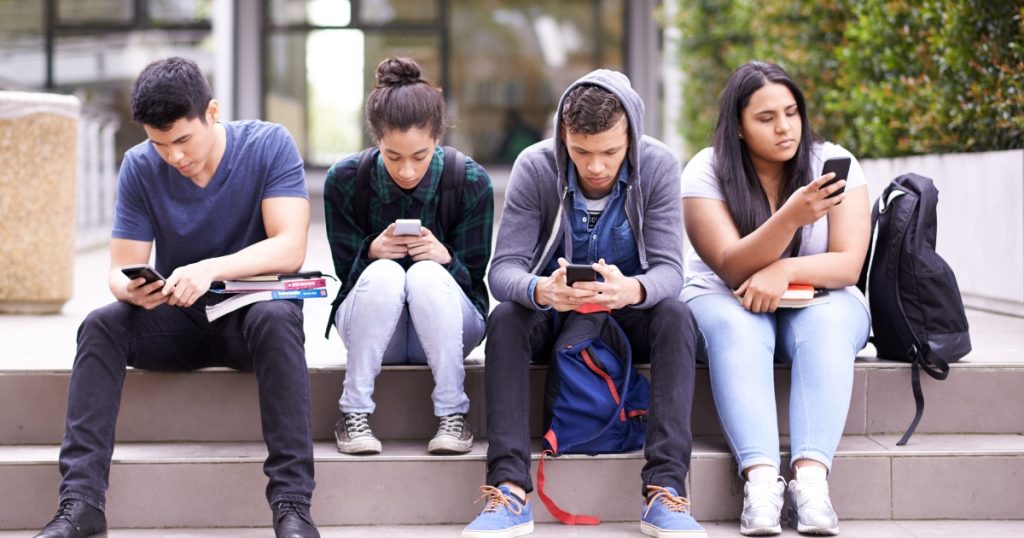Today, social media is an important part of College life. Students use apps such as Instagram, TikTok, and X (formerly Twitter) to connect, learn, and share. These platforms help with school, friendship, and self-expression. However, social media also causes problems. This is especially true for disabled students or mental health problems.
In this blog, we will see how social media affects students who face physical, learning, or emotional challenges. We will also share both good and bad pages to use social media.
The Good and Bad Sides of Social Media
For many students, social media looks like a lifeline. This helps them find support, tips, and communities for mental health that care about inclusion and diversity.
However, for disabled students or mental health problems, social media can also cause more stress. This can make them feel alone, worried, or insecure about themselves.
The Good Side: Connection, Confidence, and Support
1. Finding Community and Belonging
Disabled students find it difficult to get in touch with others on campus. They can withstand physical obstacles, feel justice, or make tight programs.
Social media helps by making rooms online where they are welcome. Facebook groups, Reddit forums, and Hashtags such as #DisabilityAwareness and #Neurodivergent help students meet others with similar experiences.
2. Easy access to tips on mental health
Several doctors and coaches in Mental Health now use TikTok and Instagram. They post small videos and graphics that explain mental health in simple ways.
Students who are not ready for counseling can learn from these positions. Later, they may feel more sure to ask for help.
3. Spread and scattered consciousness
Social media gives students a strong voice. Many people use Instagram, TikTok, and Twitter to talk about access to campus problems. They also share their personal stories and learn about life with the question of disability or mental health.
Campaigns such as #DisabledAndProud and #MentalHealthMatters help prevent stigma. They make it easy for people to talk openly about mental health and disability.
4. Comfortable Communication Options
Some students have trouble speaking in person or feel nervous in social settings. Social media gives them more control.
They can take their time to reply, use tools that help them talk, and choose when to join the conversation.
The Bad Side: Stress, Comparison, and Too Much Information
Although social media is useful, it can also cause stress. This is especially true for disabled students or conflicts with mental health issues.
1. Unrealistic expectations
Social media often shows a false version of life. You see the right images, the top character, and exciting social events.
Students with chronic illness, mental health problems, or mobility problems may feel that they are not very good. This can cause grief, stress, or lower confidence.
2. Online bullying and expertise
The Internet is not always a safe place. Some students encounter bullying, which means comments or competitive jokes due to their disability.
Unlike bullying in real life, it can occur at any time and often comes from anonymous users. It can make students feel insecure or alone.
3. Many materials can cause anxiety
Infinite rolling, not stiffeners, and trend content can feel heavy. For students with ADHD or anxiety, it can make things worse. It can be difficult to focus, study or feel calm.
4. Ignore the support from real life
Social media may feel comfortable, but it can’t replace real life. Students can stop talking to friends, avoid support from campus, or leave therapy. Over time, it can cause even more harm to their mental health.
The Challenge for Neurodivergent Students
Neurodivergent students, such as ADHD, autism, or learning disabilities, use social media differently. Some apps offer routines, such as scheduled posts or threads, to help them concentrate. But fast apps like Ticket Chef can feel heavy. Many people scroll without noticing, as algorithms show similar materials that can damage sleep, focus, and emotions. Still, social media helps them learn social skills, discover identity, and join others. For further help, students can access behavioral health services to support stress and mental health. Social media is useful, but can be challenging for neurodivergent students.
Balancing of digital commitment: Practical suggestions for students
Your mental health needs to have a healthy relationship with social media. Here are some simple suggestions that help you keep you balanced:
1. Select Positive Material
Follow the accounts that make you feel good, learn new things, or support your mental health. Follow or mute pages that make you feel stressed or bad about yourself.
2. Determine the deadline
Use the app tier or screen time tool to prevent a lot of time from spending too much time. This helps you stay under control.
3. Take a break when needed
Look for signs like tiredness, anger, or trouble sleeping. These can be signs of burnout. When you notice them, log off and relax.
4. Ask for help
Use social media to find support, but don’t trust it alone. If you feel overwhelmed, you can reach the College Counselling Center, Disability Aid Team, or a reliable professor for help.
Final thoughts
Social media is a tool; it can help or harm. For disabled students or the need for mental health needs, it provides support and connection. But without careful use and strong support, it can cause stress. By building awareness and safer online spaces, all students can feel included and thrive.


